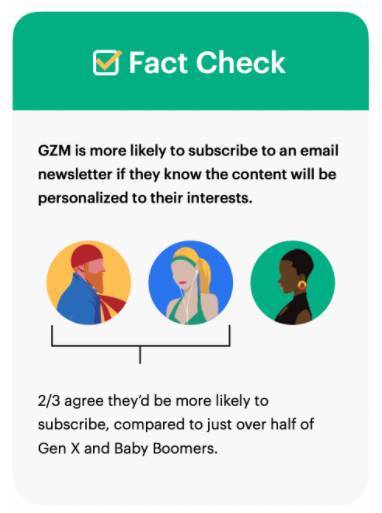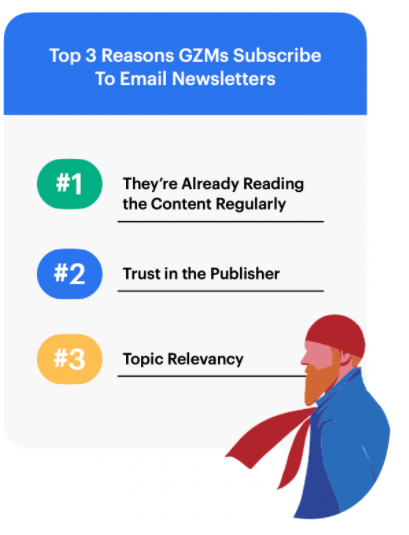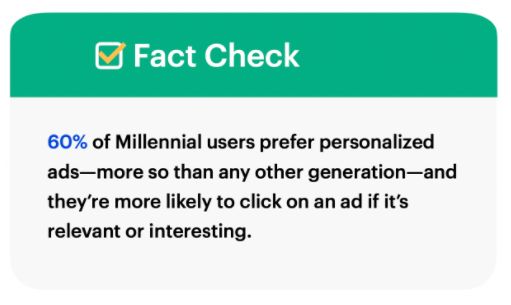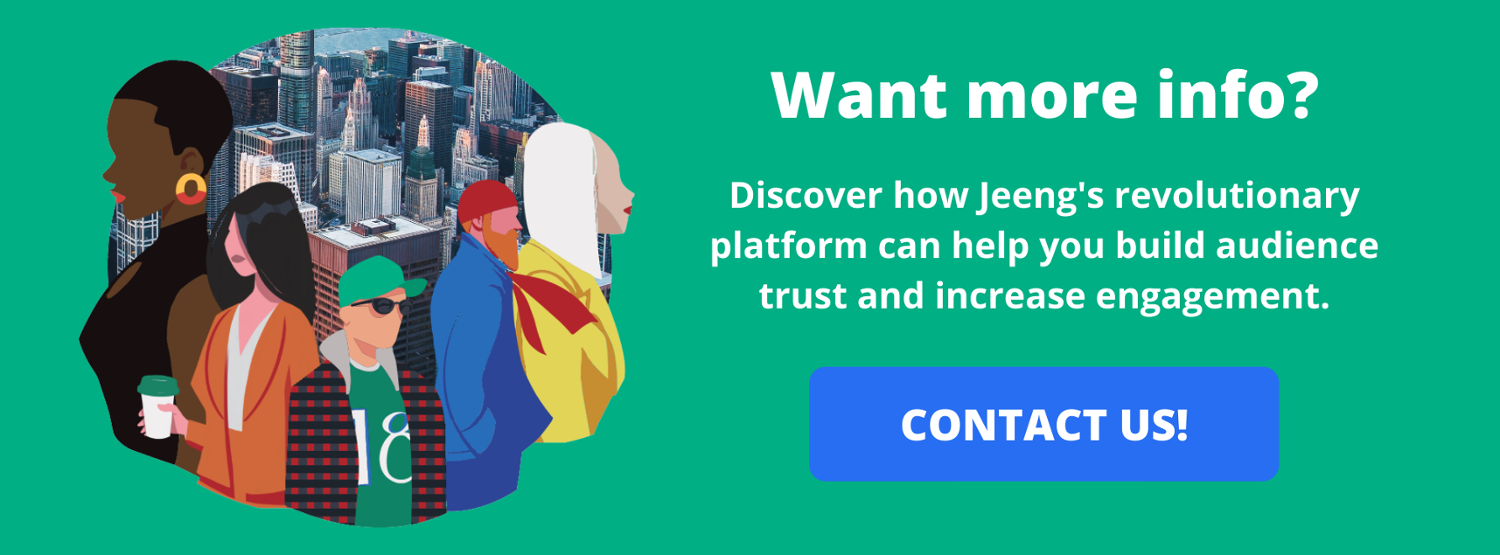Publishers are facing a serious need to take back their audiences — from data-grabbing social platforms, monopolizing search engines, and a digital marketing landscape manipulated by third-party cookies. They’re also struggling to monetize their audiences beyond just paywalls and communicate their value propositions in more innovative ways.
That’s where cross-channel personalization can help.
We all know the value of personalization for publishers and brands. By creating and distributing personalized content, businesses can increase engagement and revenue, and more effectively move audiences along the customer journey.
Now, however, it’s time to talk about how personalization is advantageous for the end user.
Because a happier customer yields a happier publisher. And as first-party data comes to the forefront of online advertising, companies have valuable opportunities to improve customer satisfaction by taking a personalized, cross-channel approach to their marketing efforts.
As Jeeng found in our 2021 Digital Publishing Consumer Survey, 66% of Gen Z and 63% of millennials say they want personalized content based on their consumer behaviors and interests — about 10% more than older generations.
SmarterHQ also reported that 72% of consumers will only engage with personalized messaging.
Want to better understand why?
Here’s a look at the four biggest benefits of cross-channel personalization for the end user.
1. Relevant and engaging content
With so much content to choose from and messaging to scroll through, it’s no wonder people gravitate towards the stories that are relevant to their interests and needs. It saves them time, makes for more engaging online experiences, and introduces them to new information, ideas, products, and services to enjoy.
Just look at a channel like email. Users can subscribe to specific newsletters that deliver the content they want at the frequency they prefer by customizing the preference center. Insider, for example, offers daily, weekly, biweekly, and exclusive newsletters across a range of verticals like politics, finance, healthcare, and tech.

In fact, Jeeng found that Gen Z and millennials are more likely to subscribe to an email newsletter if they know the content will be personalized to their interests.

Target audiences also reap the benefits of cross-channel marketing when publishers utilize other content formats like push notifications. These short, real-time messages are the perfect vehicles for delivering customized content directly to users. It’s no surprise, then, that 2 out of 3 Gen Z and millennial consumers want personalized push content and over 70% of them are open to receiving browser-based notifications.
Think about it. What’s more interesting to a customer and more likely to drive digital interactions:
A mass notification to thousands of readers about a random story that was just published, OR a targeted notification about updated football scores delivered only to those who’ve opted-in to receive sports-related content?
The latter, of course. Because it uses consumer intent and functional data to distribute relevant, personalized content.
2. Messages from a publisher they trust
Trust is in short supply online these days as consumers are forced to navigate widespread misinformation, data breaches, and privacy issues. According to 2021 research data from Deloitte, more than 70% of US news consumers are concerned about fake news.

So when users find a publisher they can trust to deliver personalized, reliable, one-on-one content, they’ll be more likely to stick around and sign up for more.
As we found in our study, 56% of Gen Z and 60% of millennials will subscribe to multiple newsletters if they trust a publisher. In fact, trust is one of the biggest reasons they’ll subscribe at all, right along with topic relevancy and the fact that they already read the publisher’s content on a regular basis.

Evidently, there’s a strong link between personalization and trust — especially on a channel like email, where consumers can enjoy customized content from publishers they rely on.
3. Improved data transparency
Apple and Google are taking big steps to protect people’s privacy online. But the truth is that consumers are okay with publishers tracking their online behavior. They just want the publisher to be transparent about it. Meaning, they want to know how and why their customer data is being used to provide better content experiences.
Sixty percent of millennials even say they prefer personalized ads and will click on one of it’s relevant to them. Over half of Gen Z and millennials are also open to personalized ads in push notifications.

That’s why the right personalization strategy can put consumers’ minds at ease and help them see the value of their first-party data.
4. Loyalty benefits and rewards
The more publishers send personalized content across multiple channels, the more opportunities consumers have to become loyal readers. And many publishers are rewarding those loyal readers with exclusive perks and benefits as part of tiered subscriptions and memberships.
By signing up for those memberships, consumers can access even more personalized content. As Annex Cloud found, 68% of millennials won’t be loyal to a brand if the brand doesn’t have a strong loyalty program.
The New York Times, for instance, invites readers to enjoy personalized experiences based on their interests, like cooking, games, and product reviews. And one of the most popular subscription options offers access to all print and digital stories across properties.

Apparently, this approach works. Last year, The New York Times’ digital subscriptions generated more revenue than its print ones for the first time in the history of the paper. And the publisher reached 8 million subscriptions this summer, with expectations to have 8.5 million by the end of the year.
Drive customer engagement with cross-channel personalization
Jeeng helps you give your subscribers the royal treatment by delivering personalized content across different channels. Your audiences can enjoy relevant, trustworthy, transparent, and rewarding experiences no matter where they encounter your messaging — via email, push notifications, or newsreader apps.
All it takes is one line of code and our exclusive algorithm to make it happen.
And all you have to do is let us know you’re ready to get started.
Contact us to learn more. We’re ready to help.


